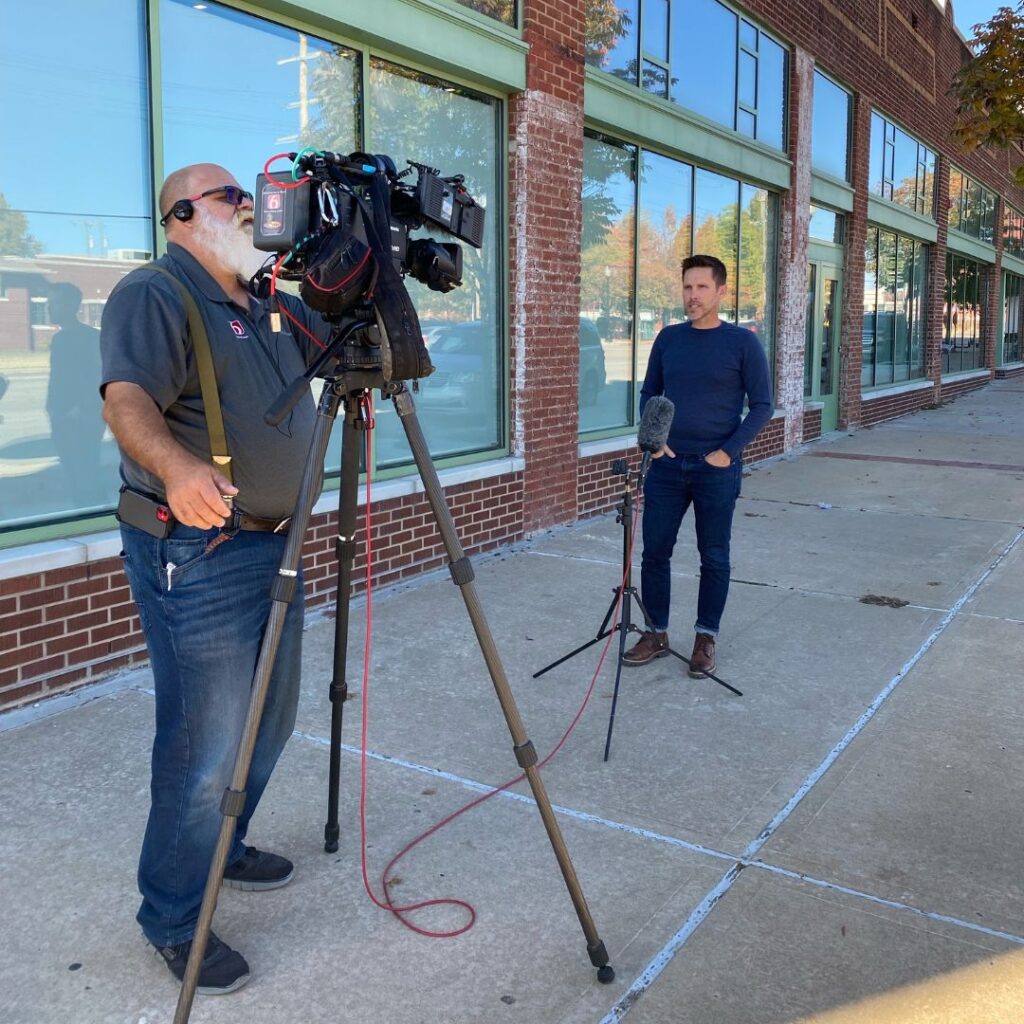Defining media relations is simple. However, it’s harder than it sounds to maintain. At its core, media relations is developing and keeping relationships with the media. In the past, this meant just newspaper and television reporters. Today, it also includes podcasters, bloggers and even social media influencers.
Maintaining a relationship with members of the media is a two-way street. Yes, it helps you get media coverage across multiple sources. However, it also helps them share news and information about your business within their networks. It’s like making friends with people who can tell others about what you’re doing. This credibility means more people will know about your business or organization.
Have you ever asked yourself how you can get your story on the news? You may be wondering where to begin to get your company press coverage? Let’s dive in.
Build relationships with the media
As mentioned, establishing relationships with journalists and other media employees is the key to securing media coverage. Reach out to them and form a direct line of communication that both sides can rely on.
Not only will they begin to recognize your name, but they also may reach out to you for comments on a news story related to your industry. It speeds up the process and increases the likelihood of your company gaining media coverage.
Do you want to pitch your stories outside of a local level but don’t know where to begin? Take note of reporters who cover similar stories on a national basis. This is a great clue that they would interested in relatable topics, not to mention that they have some subject matter history.
These media relationships will also come in handy for crisis management. Nobody wants to face a crisis, but having direct media contacts makes it easier to share the information you need efficiently and effectively.
How do I get media coverage?
Media relations is an important part of any business marketing strategy. Whether you’re a seasoned pro or new to the media relations game, having relationships with the media is incredibly beneficial – and key to landing your story in the news.
To get this sought-after media coverage, you’ll have to first understand your brand and craft a compelling story. If you can’t communicate all of the awesome things about your brand, then the media won’t bite.
Next, a well-crafted press release or pitch is key to getting media attention. Lastly, be sure to offer expertise and position yourself as a thought leader. However, none of this can be done without connecting with journalists.
Developing a media pitch or press release
To create a successful media pitch, consider the audience you are trying to reach. As a brand, you probably have a good grasp of your target audience. However, media platforms vary in format and their audiences may differ from your own.
For example, you don’t want to pitch a story about a clothing brand to a reporter who specializes in sports. The target audience isn’t relevant, and it’s likely they won’t pick up your pitch. When pitching your content, consider all the possible demographics with these questions:
- What demographics do you want to reach?
- Is your story best suited for a local or a national media outlet?
- What media platforms do your competitors use?
Research different media outlets to find the one that best fits your audience and message. Watch trending stories on their website and see what the reporters are posting on Twitter (or Threads).
Understand the media landscape to sell a newsworthy story
Media outlets cover content they deem newsworthy. You’d be surprised to see the amount of information shared with them daily. This requires they prioritize what they believe their audience should know. But how do they determine what’s newsworthy?

Here are five things that can help determine if your story is newsworthy:
- Is it timely? Is it something happening today or tomorrow? Is it new and now?
- Who does it impact? Is it relevant to a large number of people in your community or target audience? If the impact is only to your company or your stakeholders, it’s probably not newsworthy.
- Is there conflict or controversy? Does it highlight a problem you are solving?
- Is it a human interest story? Can you show a real person who was impacted by this? Are you celebrating someone?
- Is it relevant? People interact with information that is relevant to them. So, your story needs to answer people’s questions or give them information to help them make decisions.
It’s important to remember not to sacrifice the quality or accuracy of your pitch for these factors. And remember: Just because it is important to your company doesn’t mean it is important to a news audience.
Media relations 101
Media relations doesn’t just happen, and these relationships aren’t formed overnight. They take a lot of time and effort to develop.
A positive presence in the media increases brand awareness and brings in potential customers. It’s a great tool to increase your brand’s reputation. Getting media coverage gives you essential, third-party credibility. You aren’t bragging on yourself. Instead, someone is doing it for you. Yet, curating these relationships takes both time and trust.
At Resolute, our team has developed both local and national media relations. With 37 combined years of media relations experience, we consistently grow and evolve our strategies.
If all else fails and you find yourself overwhelmed, reach out to a local PR firm. PR professionals have the resources you need to cultivate media relations and the expertise to develop a strategy that reflects your brand goals.
